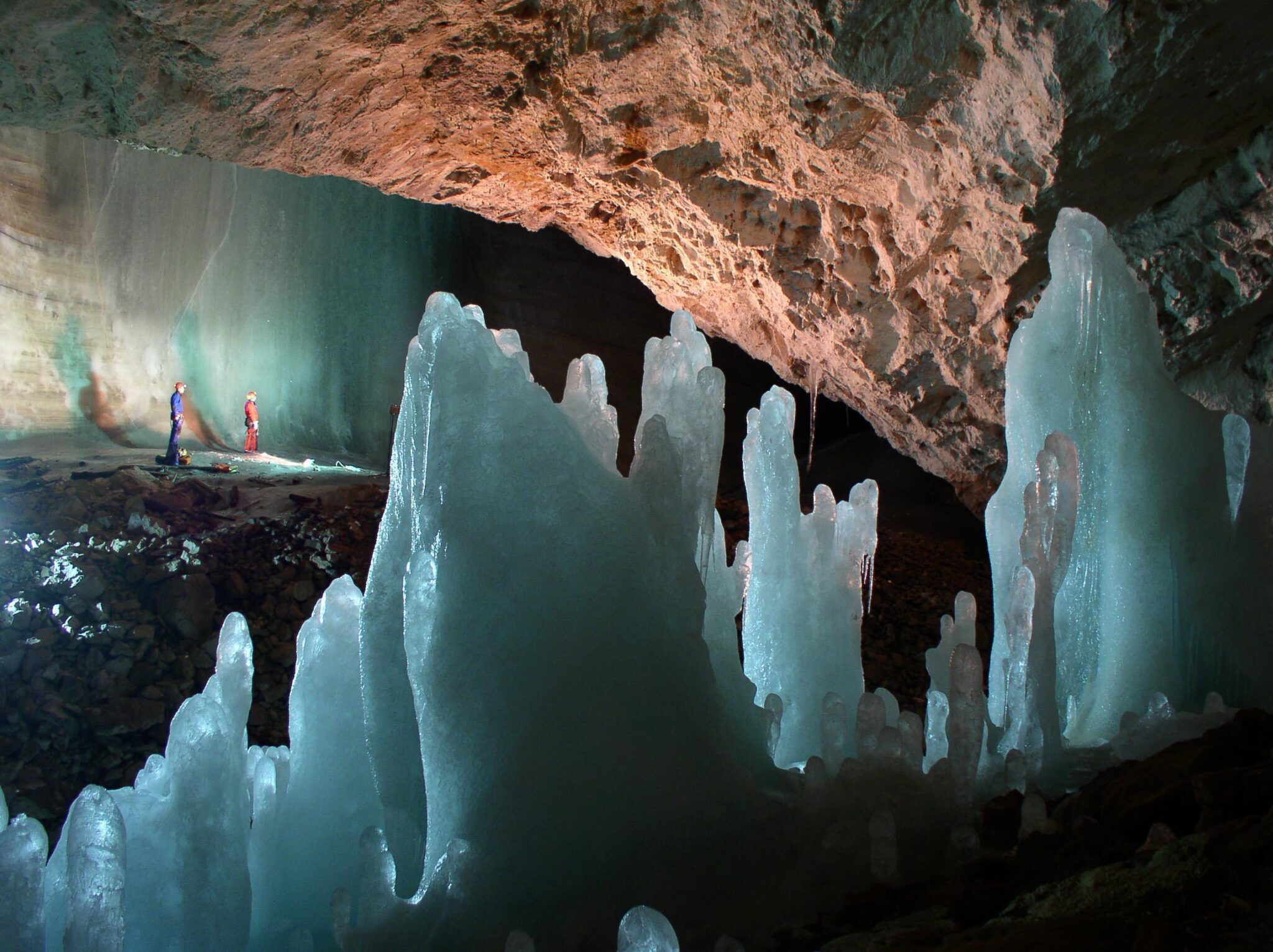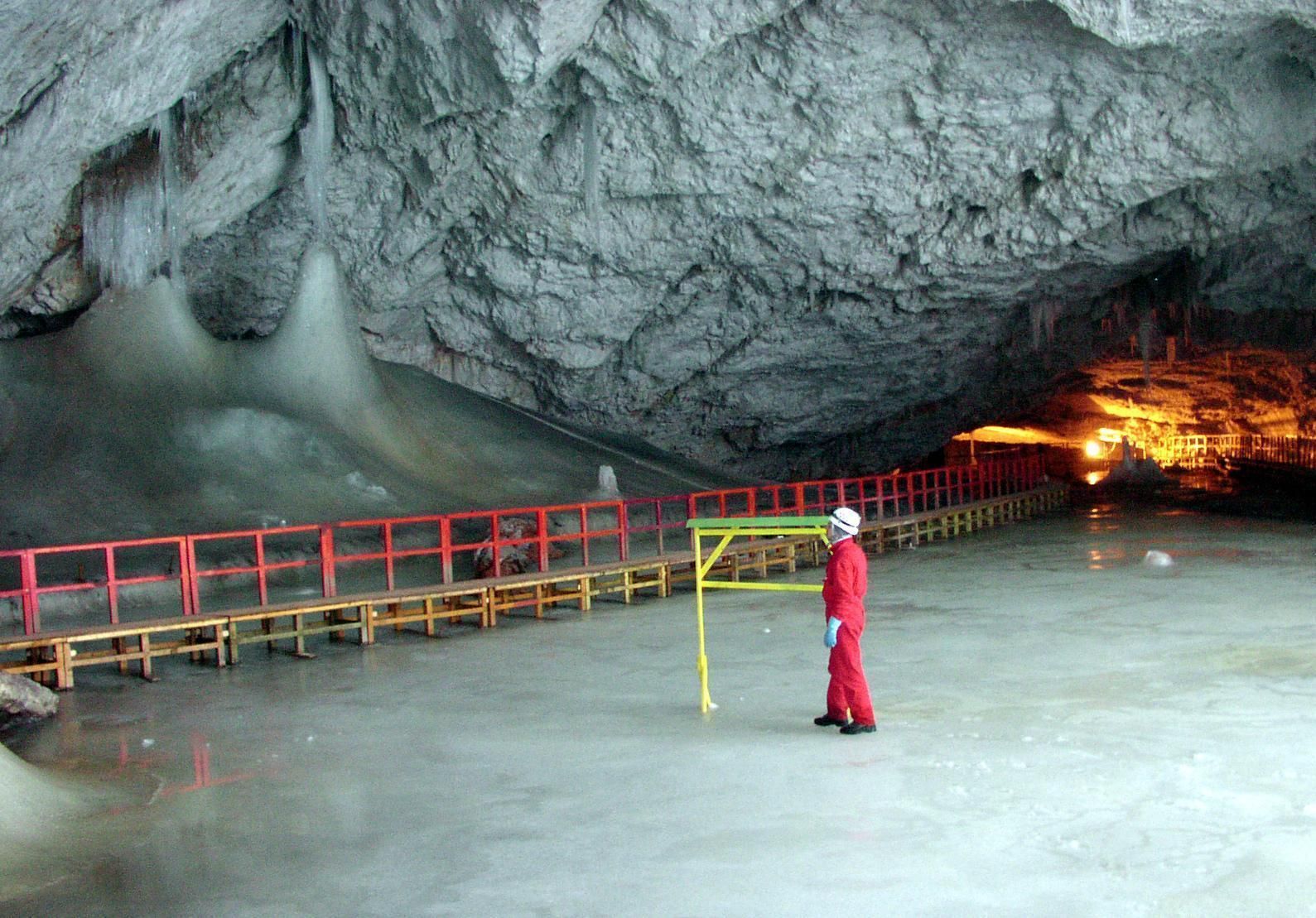

C. Ciubotarescu
Deep inside the Apuseni Mountains you’ll find the Scărișoara Ice Cave in Transylvania, the oldest cave glacier in the world. You’ll also find some pretty incredible climate data from the last 10,000 years.
An international team of scientists from several institutions, including the University of South Florida, University of Belfast and Stockholm University, reconstructed winter climate conditions using ice cores from the cave that were indicative of the Holocene epoch. The Holocene was a period of more than 11,000 years from the present, but many climate scientists say we’ve moved into a new epoch, the Anthropocene, a geological period in which human activity profoundly shapes the environment.
The cave was an ideal place to study for winter conditions because it had precipitation data from the Atlantic Ocean and the Mediterranean Sea that seeped in and formed deposits in the ice over a course of 10,500 years—almost as long as the Holocene itself. Those deposits, which consist of tiny fragments of leaf and wood, provide information about the shifts in temperature and precipitation.

Before this study, scientists had little to no information about holocene winters. Most climate data is pulled from warm months by analyzing tree rings, pollen and small organisms preserved in fossils.
“Most of the paleoclimate records from this region are plant-based, and track only the warm part of the year—the growing season,” Candace Major, program director in NSF’s Directorate for Geosciences, said in a release. “That misses half the story. The spectacular ice cave at Scărișoara fills a crucial piece of the puzzle of past climate change in recording what happens during winter.”

Now, the scientists have a much more complete understanding of holocene climate. They learned that temperatures reached a maximum during the middle of the epoch about 7,000 to 5,000 years ago. During this period of warming, vegetation changed rapidly and neolithic people were able to migrate north toward Western Europe. Then, the temperature began to gradually decrease as the planet reached the Little Ice Age about 150 years ago.
“Our data allow us to reconstruct the interplay between Atlantic and Mediterranean sources of moisture,” Bogdan Onac of USF said. “We can also draw conclusions about past atmospheric circulation patterns, with implications for future climate changes. Our research offers a long-term context to better understand these changes.”
The team will continue to reconstruct the data and hopefully come up with a consistent climate map that can date back more than 13,000 years.

 233k
233k  41k
41k  Subscribe
Subscribe 